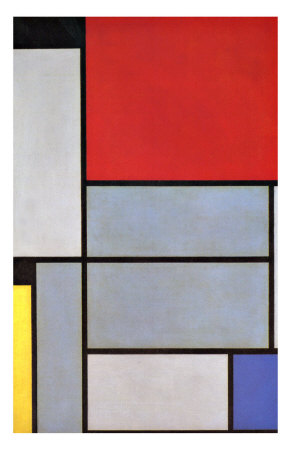Piet Mondrian created Tableau I in 1921, two years after moving from his native Netherlands to Paris
In moving to Paris Mondrian entered a brand new phase of creativity and artistic freedom, his works becoming gradually more abstract, moving away from the traditional naturalistic approach he was taught at home.
Tableau I is one of Mondrian's first pieces to so prominently display his newfound style, and as a result it is a piece of great importance. It provides a snapshot of Mondrian's new approach to art, and documents a key stage of his development and evolution into the abstract, pioneering painter he is remembered for being today.
By the early 1920s Mondrian had grown to reject the traditional way art was done, the view that art had to be a life like depiction of reality. Mondrian believed that the universe and the nature of reality itself was radically different to this, and required a more symbolic style of depiction. His central philosophy was the idea that the universe is a naturally harmonious collection of different objects and substances, which combine to form the magnificent natural structures we can see today.
In Tableau I the use of geometric blocks, clear defined black lines and use of block, primary colours demonstrates this. The blocks in the painting are all different sizes, some different colours, but they combine to form one piece of artwork.
The use of vertical and horizontal black lines is meant to emphasise both the differentiation and natural synthesis between these shapes. The use of primary colours shows Mondrian is referring to the concept of building something from the absolute basics, in the same way that the primary colours are fundamental to every colour produced in every painting.
Tableau I is a piece that provides an important snapshot of Mondrian's philosophical evolution into his well known abstract style, and the piece itself is a fascinating representation of Mondrian's ideas about the nature of the universe itself.




